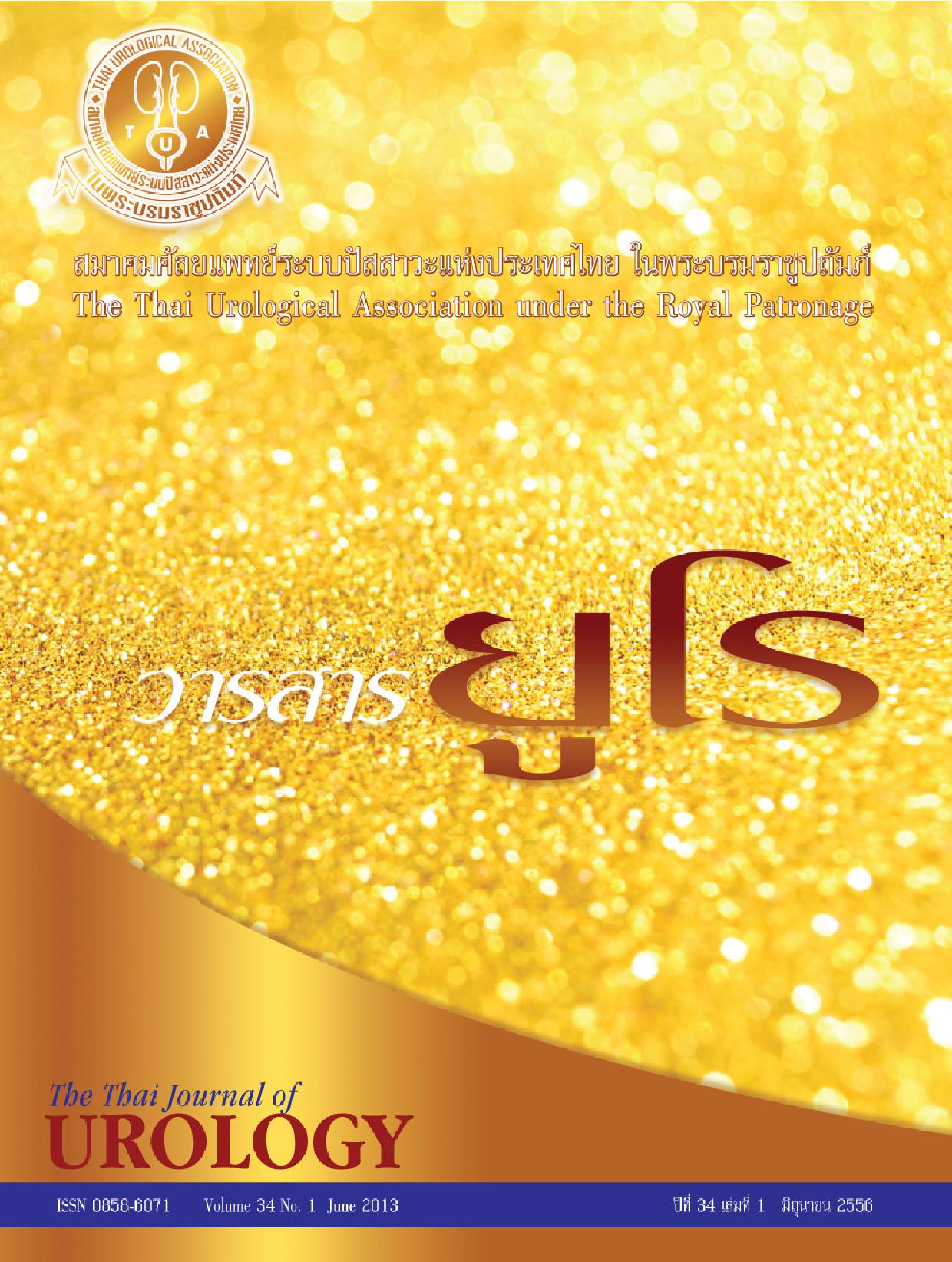Evaluation of lower urinary tract symptoms and clinical outcome after renal transplantation at Rajavithi Hospital
Keywords:
Lower urinary tract symptoms, nocturnal polyuria, renal transplantation, bladder capacityAbstract
Objective: To evaluate lower urinary tract symptoms and the correlation between bladder capacity and lower urinary tract symptoms after renal transplantation at Rajavithi Hospital.Patients and Methods: Demographic data and preoperative maximum bladder capacity were evaluated by retrospective analysis of the medical records of 50 patients (26 men and 24 women, the mean age was 41 years) who underwent renal transplantation between August 1998 and September 2011. AUA symptom score and the frequency voiding chart were investigated. The correlation between the preoperative maximum bladder capacity and lower urinary tract symptoms were analyzed.
Results: Mean maximum bladder capacity before transplantation was 204 ml. and mean maximum functional capacity after transplantation was 371 ml. Nocturia (> 2 voids during a nightûs sleep) and nocturnal polyuria occured in 48% and 50% of patients. These symptoms were found significantly in patients who had a bladder capacity of less than 200 ml (P = 0.04 and 0.03 respectively). However, the symptoms of frequency, urgency, intermittency, incomplete emptying, weak stream and quality of life scores were not significantly related to bladder capacity.
Conclusions: Nocturia and nocturnal polyuria are characteristics of lower urinary tract function after renal transplantation, which is probably associated with long term anuria during hemodialysis and small bladder capacity. Quality of life is not impacted by lower urinary tract symptoms due to a low symptom score in most patients.
Downloads
Published
2013-06-01
How to Cite
Theerawirojana, M., & Wongwattanasatien, N. (2013). Evaluation of lower urinary tract symptoms and clinical outcome after renal transplantation at Rajavithi Hospital. Insight Urology, 34(1), 13–19. retrieved from https://he02.tci-thaijo.org/index.php/TJU/article/view/63148
Issue
Section
Original article



